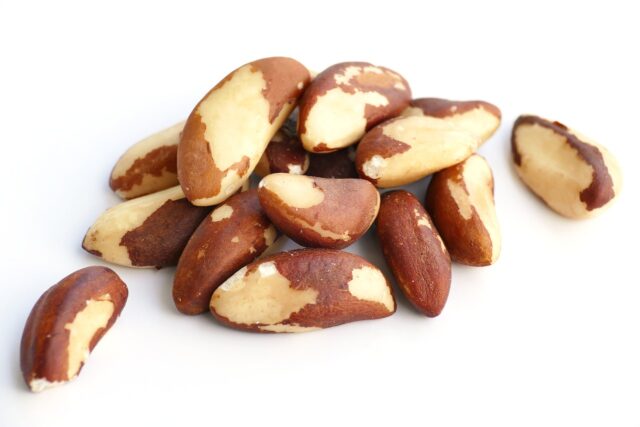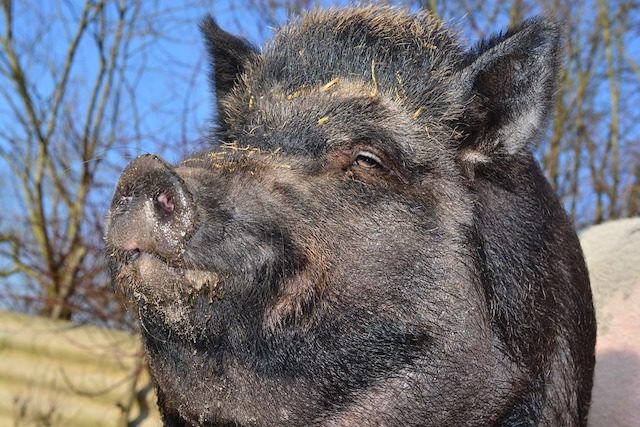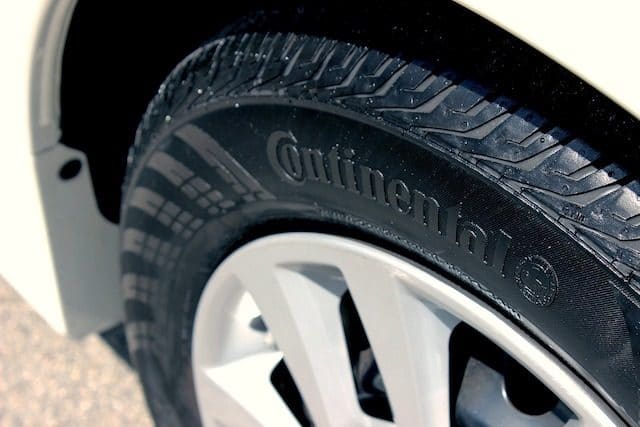The world seems to be going to hell in a handbasket these days. There are murder hornets and natural disasters and pandemics and the threat of world-destroying war to keep us all on edge. What happened to the good old days when all we had to worry about were things like rampant street crime and radiation? Well, fear not! It’s time to relax with a nerve-calming list of things you never realized were irradiating you just a little bit in your everyday life.
10. Brazil Nuts

Brazil nuts may never achieve the lofty heights of an almond or a pecan in most people’s eyes, but they do contain some essential nutrients and may help balance blood sugars for diabetics. So that’s good, right? On the downside, eating too many of them will expose you to a relatively high amount of radiation, thanks to the fact the nuts are chock full of radium.
Your average Brazil nut is about 1,000 times more radioactive than anything else you’re likely to eat. That sounds terrifying, but in context, it’s not that big of a deal. If you eat a handful of them a day, you’ll be fine. Just keep it within reason, as something like 50 nuts per day would become toxic.
The trees on which Brazil nuts grow have massive root systems. They spread deep and far and are able to absorb a lot of naturally occurring radium. Interestingly enough, the nuts are some of the least dangerous parts of the tree as the leaves and bark have even higher concentrations, should you ever be tempted to eat another part of the tree.
9. Spark Plugs

Spark plugs are something few of us ever think about until a mechanic tells us we need a new one. Then there’s a brief moment of panic until you find out they cost about $20 and take a couple of minutes to replace, and then you go back to not caring about them. And that’s a shame because, for a while at least, you could actually get radioactive spark plugs for no good reason whatsoever.
Once upon a time, Firestone made spark plugs with polonium electrodes. Now you may be wondering, is polonium dangerous? Well, according to science, it’s more toxic than hydrogen cyanide. How, right? To be more precise, it’s 250 billion times more toxic. That’s a lot of times.
Polonium-210 has a half-life of about 138 days, so today those spark plugs are all inert, but hopefully the people who made them had some protective gear on in the factory.
The idea behind the plus was that maybe the radiation would help improve the performance by making it easier for the spark to jump the gap? It’s hard to say for sure because the science doesn’t really make sense and that’s one of several reasons you’re not seeing these plugs on the market today.
8. Seagulls

Some people absolutely hate seagulls. They’re some of the most brazen birds in the world and can really make a day at the beach a bad time if you leave out snacks or if they choose to circle overhead and make a mess of your spot. On the other hand, they do a lot of good keeping beaches clean. And, depending on where you live, they may also be radioactive.
On the coast of Cumbria in England, you’ll find the Sellafield nuclear site which features hundreds of facilities and was the location of a serious disaster back in the 1950s. It’s very slowly being decommissioned and is considered one of the most contaminated places in all of Europe.
Stray cats and mice were all over Sellafield, but so are seagulls and there are concerns they’ve been splashing about in pools of plutonium and nuclear waste. Why are there open pools of plutonium at Sellafield? Well, that’s a good question. Moving on.
As far back as 2005, they were culling the gulls and storing them in a freezer on site. In 2014, photos showed that they were still floating in radioactive pools on site. Even as late as 2018, there were reports on efforts being made to control radiological damage to food sources in and around Sellafield that pointed out ongoing efforts to control seagulls in the area through culling and destroying eggs.
7. Bananas

Everyone knows that if you want a boost of potassium, you should eat a banana, even though a potato actually has a lot more potassium but nevermind that. But maybe you don’t want too many potatoes because it’s that potassium that makes a banana very slightly radioactive.
Potassium-40 is the specific culprit, a natural isotope of potassium that you’ll find in a banana that irradiates you a tiny bit with each delicious bite. Tiny is the operative word here, of course. You’d need to eat 1000 bananas to get a dose of radiation equal to an x-ray. And since potassium is something our body needs to survive, it is naturally regulated and, barring illness, you’ll never have more in your body at any given time than you need, so the radioactive kind can’t build up.
6. Guarapari Beaches

If you head to southeast Brazil, you’ll find Espirito Santo, home to the infamous Guarapari Beaches. Back in the day, doctors boasted of the health benefits of heading to the beach because of the curative properties of the mysterious sand. The sand was saturated with a mineral called monazite and monazite was saturated with radioactive thorium.
Back in the 1970s, people were still willing to believe a doctor when they said radiation could cure your arthritis, so tourists flocked to the beaches which were about as radioactive as a chest x-ray. Despite the tourism industry still sharing these ideas, it’s not recommended for anyone to stay on the beach for too long thanks to the gamma radiation they’re likely to absorb.
5. Toothpaste

Medicine has a long, unsettling relationship with radiation. There was a time when people were convinced that the more radiation they could get in their bodies, the better. There were radioactive tinctures and tonics and, yes, even toothpaste.
Doramad toothpaste, from Germany, was infused with thorium. According to the label, this radiation would help increase the defenses of your teeth and gums. The thorium used was extracted from monazite, the same sands that were being taken from Guarapari Beach and the toothpaste was made by the same company.
Levels of radiation were low overall, and it’s unlikely anyone suffered many ill effects from using the toothpaste. That said, if you ever get the chance, please don’t use radioactive toothpaste.
4. Wild Boars

In the US, wild hogs cause about $1.5 billion in damages every year. That sounds awful but it may be better than the wild boar issue people in some parts of Asia and Europe have to deal with. The damage is bad, but at least those wild pigs aren’t radioactive.
Around the Czech Republic, wild boars are a popular source of meat. Unfortunately, the boars have been absorbing more and more radiation thanks to the Chernobyl disaster. When Chernobyl had its meltdown, a lot of Caesium-137 was released into the atmosphere. Eventually, that settled in the Sumava mountains and into the soil. Truffles eventually absorb the radiation and the boars hunt for the truffles and eat them.
In Japan, after residents fled the Fukushima nuclear meltdown, boars moved into the area and began to breed with escaped domestic pigs. That resulted in a large population of radioactive pigs and boars essentially taking over the area and making it difficult for people to return.
Just like in Europe, the meat is a delicacy, but it’s too dangerous to eat. In some samples, the levels of Caesium-137 are 300 times higher than safety standards allow.
3. Fiestaware Ceramics
Have you ever heard of Fiestaware? It’s a glazed ceramic brand of dinnerware that dates all the way back to the 1930s. It’s still being made today, and it’s arguably the most popular brand of China produced in America.
Back in the 1930s, Fiestaware came in a handful of colors which were part of the glazing process. Red Fiestaware was the most popular, but also the most expensive. This was thanks to the fact that, in order to achieve the red shade, uranium oxide was added to the mix. And that resulted in radioactive dinnerware. Like other radioactive materials at the time, there wasn’t an immediate risk as levels were considered low. However, there’s a difference between a radioactive spark plug and a salad bowl.
Over time, there was some fear that repeated use, especially exposure to things like scrapes from silverware and etching from acidic foods, could cause the radioactive compounds to leach out of the glaze and be ingested. And ingesting uranium is a lot worse than just holding it.
Eventually, the radioactive glaze was discontinued and replaced with something safer, but a good number of products were sold with it included.
2. The US Capitol

Pretty much everything in the world is a little bit radioactive and we’ve seen that sometimes that’s not even worth worrying about. Everyone should still enjoy bananas whenever they like. But as we’ve also seen, some things are just weirdly more radioactive than they should be. Or at least more radioactive than we’d expect them to be.
The US Capitol building is one such example of something far more radioactive than you’d think it should be. It’s made from granite and that granite is not something that would pass inspection today. That’s because it contains a high amount of uranium. Radiation levels are 65 times higher than EPA standards. For some additional context, inside the Capitol you’d be exposed to radiation that’s 550 times greater than what you’d get at the fence line of a nuclear power plant.
Again, this doesn’t mean Congress is on the cusp of becoming glowing green zombies, but it does translate to a 0.5 percent increase in cancer risk.
1. Primo’s Flat Fix

New York City covers over 300 square miles and is home to nearly 9 million people. And in all that space among all those people, there is one single place that holds the dubious distinction of being the most radioactive spot in all of New York. And it’s a tire repair shop.
Believe it or not, this is going to take us back to those beaches in Brazil and that Nazi-era radioactive toothpaste. See, Primo’s auto shop is located on what was once the location of the Wolff-Alport Chemical Company. Back in the day, they did exactly what the Germans did with that Brazilian sand, or sand just like it. They refined the monazite to get out rare earth metals and, in the process, got things like thorium and uranium as a by-product.
For a time, thorium was useful, but not always. Before and after the Second World War, thorium was essentially garbage. They literally flushed it down the toilet or just buried it. During the war, it was useful for weapons though and that was important because, in that period, the company amped up production. Then, when it was no longer needed, Wolff-Alport had extra stock that was useless. So they dumped it again. And they dumped it right on site.
Unlike some of the things we’ve mentioned, Primo’s is not in that “no big deal” zone. The EPA actually had to come to the site and install thick steel and iron plates over lead in the ground to try to offer a temporary shield against the exposure.
Workers in the shop get triple the safe dose of radiation every year and word is the EPA has plans to demolish the entire neighborhood.